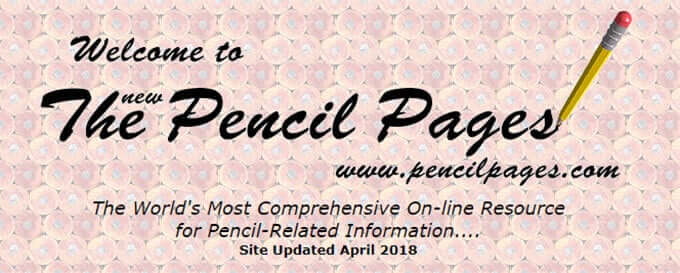If pens and pencils are siblings, then pens are the sexy sister who gets all the attention.
But, pencils deserve love, too, and we know a guy who gives them all the respect they’ve earned. His name is Doug Martin, and he’s been running the Pencil Pages site for more than 15 years!
Pencil Pages is not actually a blog, but all the same, it is a tremendous resource for anyone who has even the slightest interest in one of our oldest ‘modern’ writing instruments. His site is packed with articles, photos, history lessons and even classified ads for pencil collectors.

At the Pencil Pages site, I found the best, simplest explanation of how pencils are made that I’ve ever seen. If you’ve ever wondered how they get those leads inside the wood, you should check it out.
Or, you can browse the site for any number of other fascinating insights into pencildom, from close-up shots of classic Mohican pencils to an insider’s tour of the Sanford pencil factory.
And check out the page of pencil-related humor, where the jokes are so bad, they’re funny. Like this one:
If the #2 pencil is the most popular, why isn’t it #1?
As you regular readers know, we here at the Pen Vibe Blog are a curious lot, so we wanted to know more about Doug. Luckily, he was kind enough to take a few moments to answer a few questions we sent along. This is what he had to say:
Q: Where did your fascination with pencils start?
A: By chance, I picked up a copy of ‘The Pencil; a history of design and circumstance’ by Henry Petroski. After reading it, I began taking closer notice of different brands of pencils. Before I knew what happened, I was a collector!
Q: What led you to create the Pencil Pages site?
A: I originally hoped it would help me find other pencil collectors. It worked! A collector from the UK found it and emailed me. Since then, I have continued it as a resource for collectors.
Q: What was the first collectable pencil you acquired?
A: That’s a tough question. My idea of ‘collectable’ is pretty wide-ranging. My main focus is on brand-name pencils, and I remember early-on finding some Ruwe pencils in an art store. Had I known then how rare they are, I would have bought them all.
Q: What are some of your favorite pencils?
A: I like the rarer brands by some of the lesser-known makers, such as The Pencil Exchange, Ozark, Providence, etc.
Q: How many pencils do you own now?
A: I think I have somewhere around 20,000.
Q: What is your go-to pencil for everyday use?
A: I have been partial to the Ticonderoga, but I also use an assortment of older pencils from my box of sharpened specimens.
Q: What is the secret to Pencil Pages’ longevity?
A: It is simply my wish to keep it going. I make next to nothing in terms of income from the site. I guess my pay consists of the frequent compliments and encouragement I get from visitors.
Q: What has surprised you about the worldwide pencil collector community?
A: There are a lot more pencil collectors than I could have imagined.
Q: What is the most interesting thing that has happened to you because of Pencil Pages?
A: I’m going to tell you of two things: I appeared live, via satellite, on the British talk show ‘Johnny Vaughn Tonight’, along with actor Rob Schneider. I also had my picture on the front page of the Wall Street Journal.
Doug also shared with us that, “I am a computer and electronics professional at a university, married, grown children, and I live in a former church building.”
As always, we sincerely appreciate both the work Doug does and the time he took to talk about his love of pencils. We highly recommend you skip on over and check out his site.
If you like what you see, send him a note and tell him so.